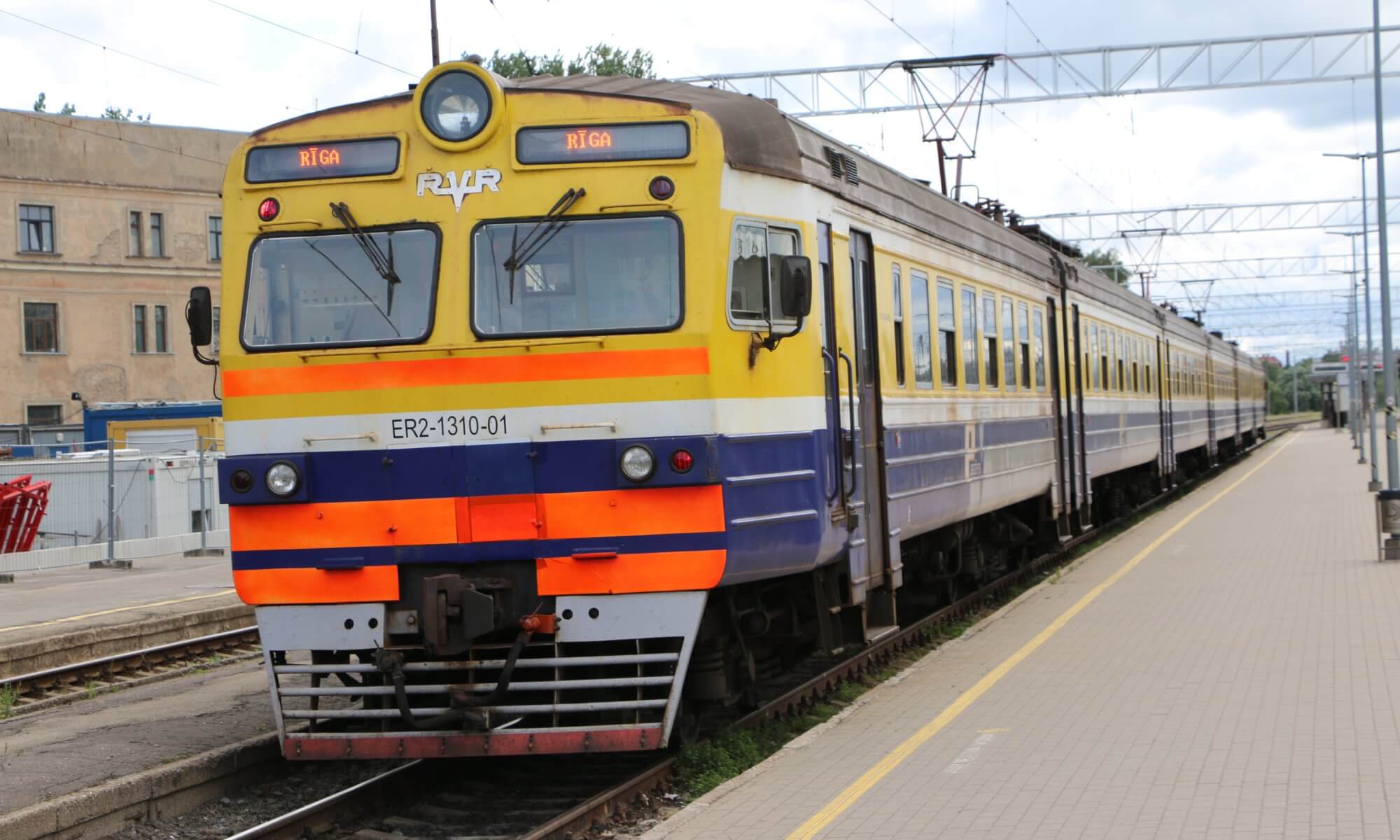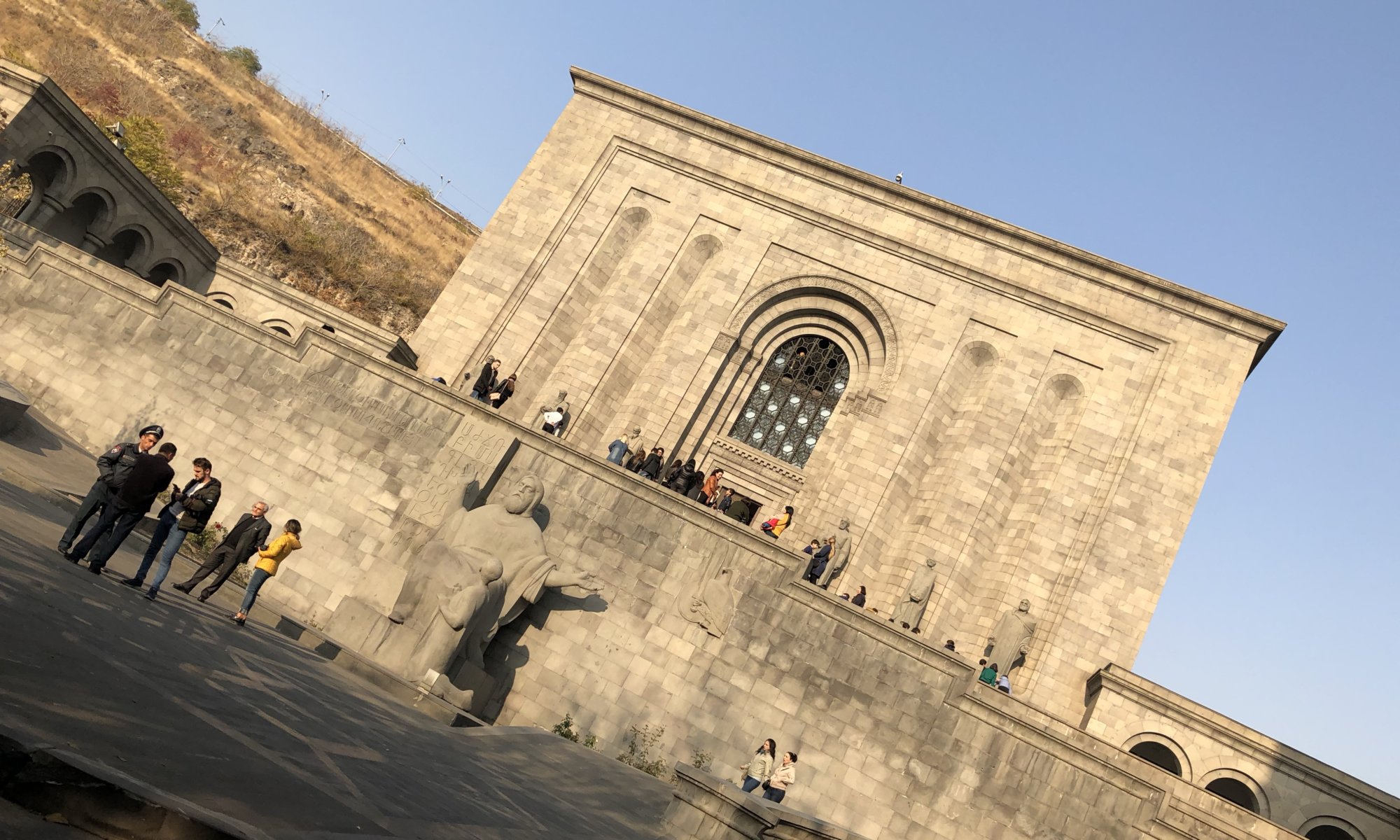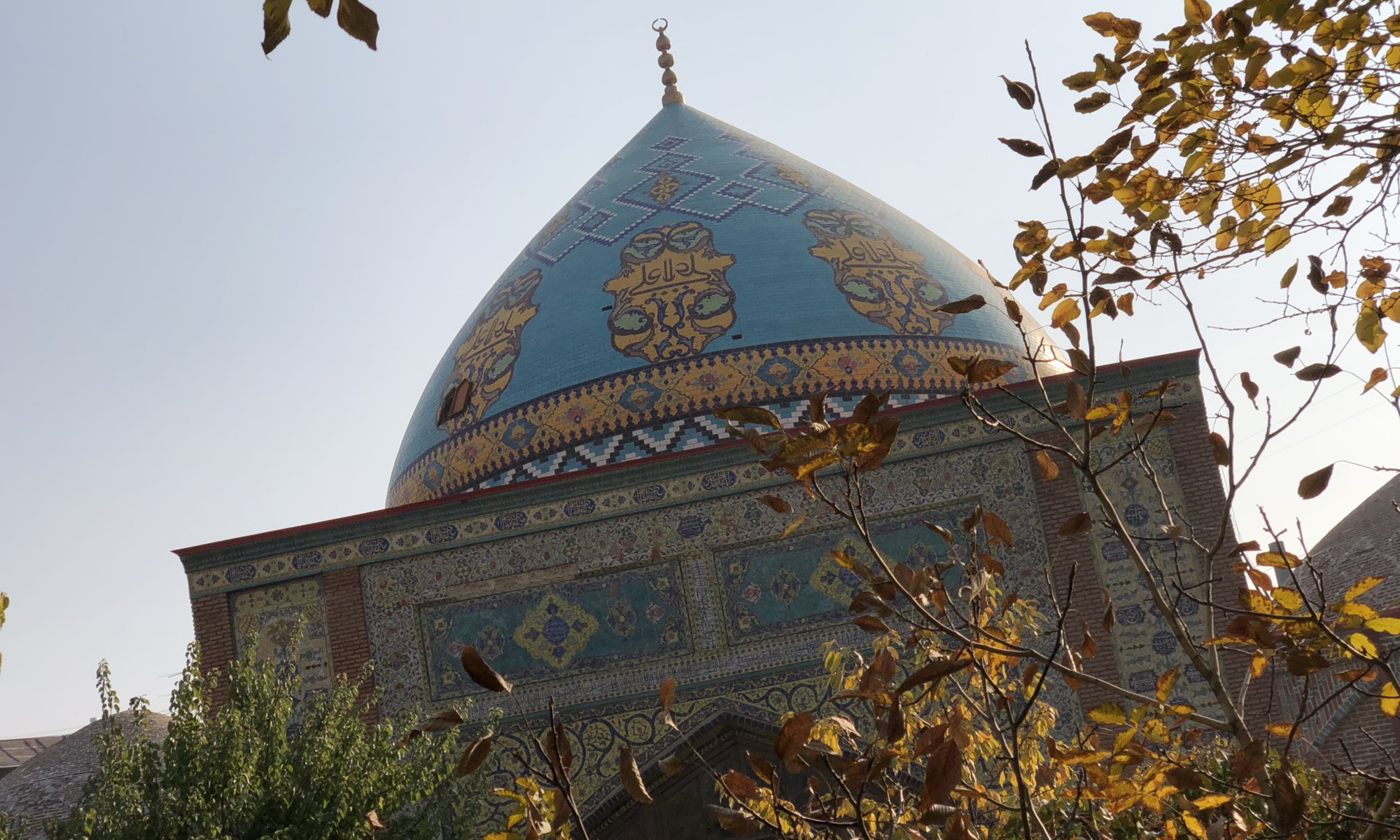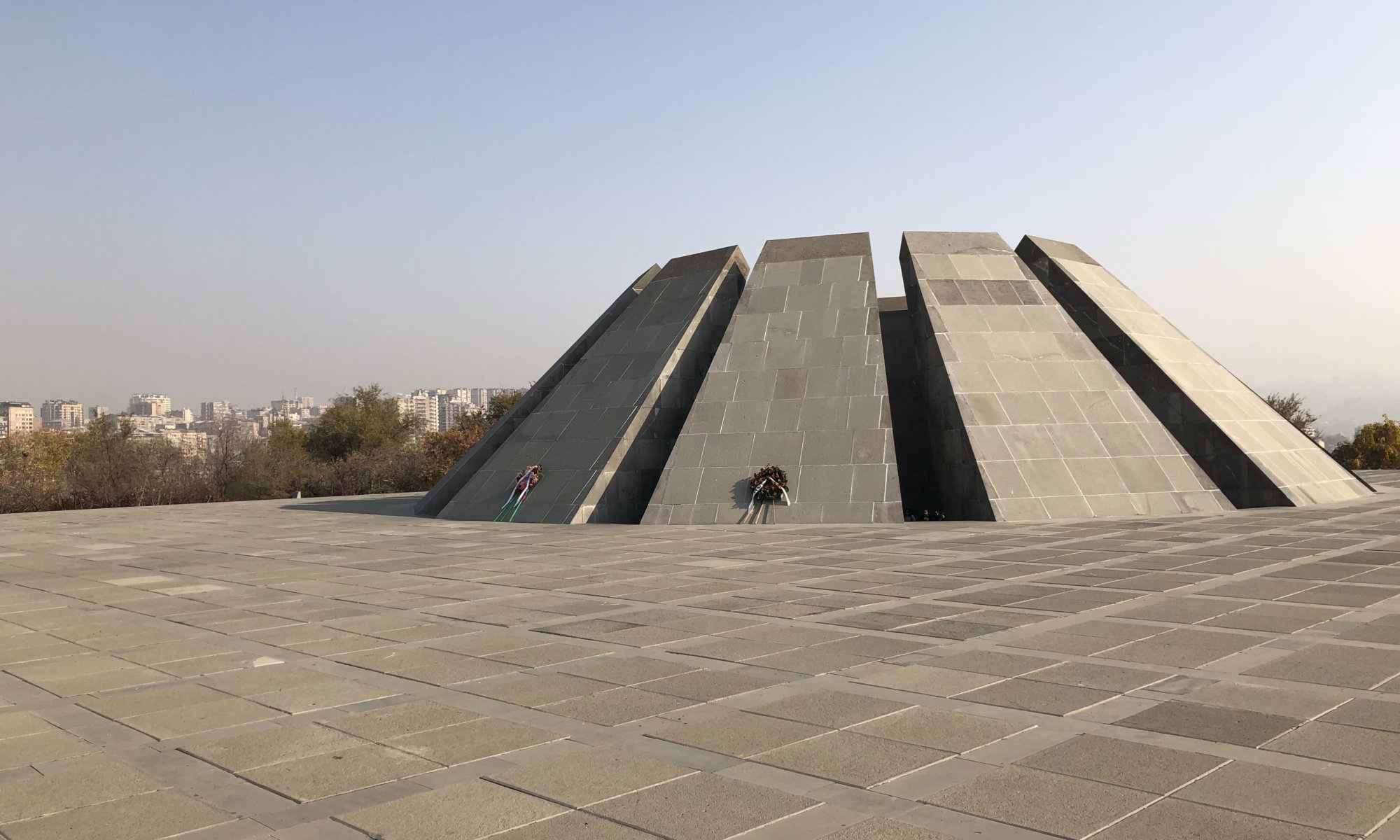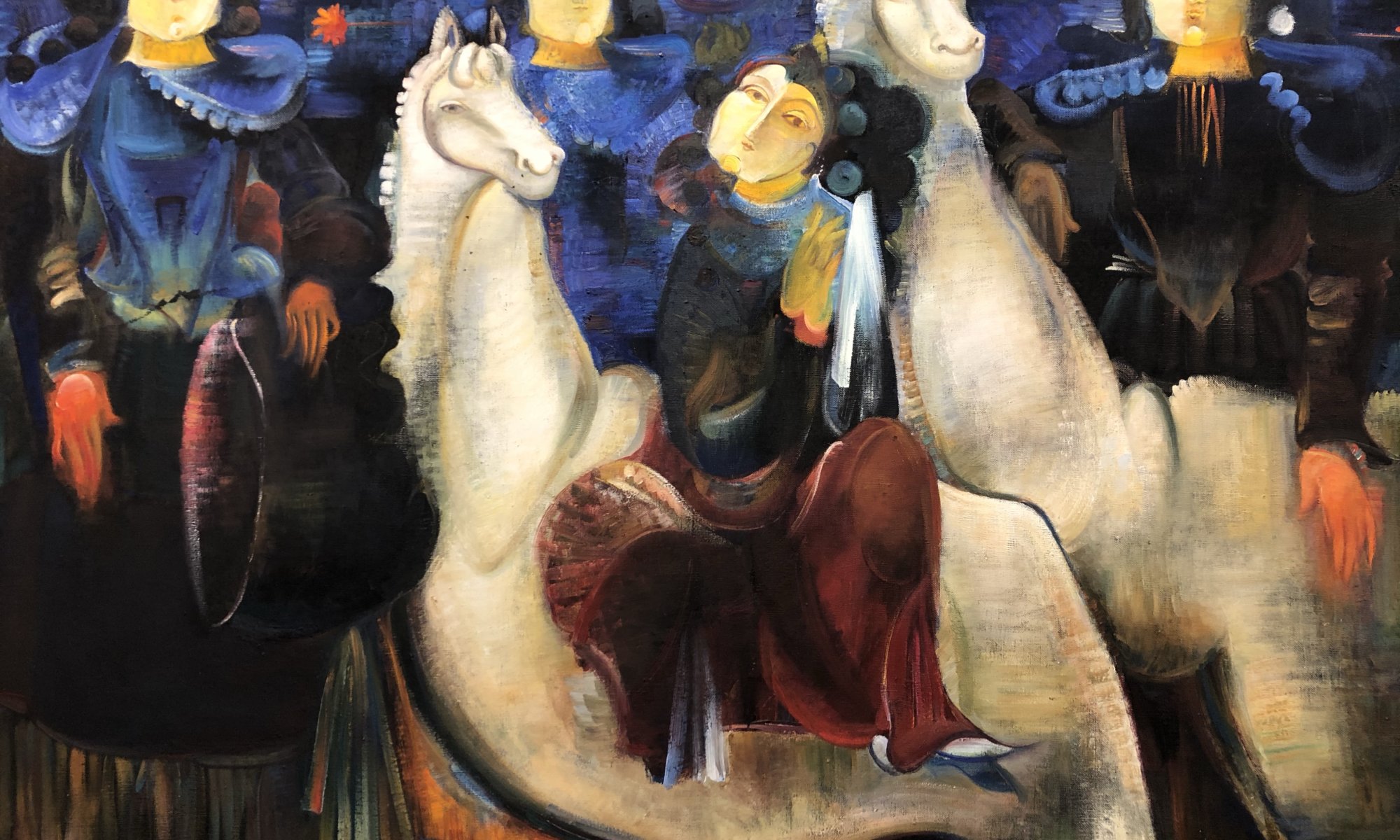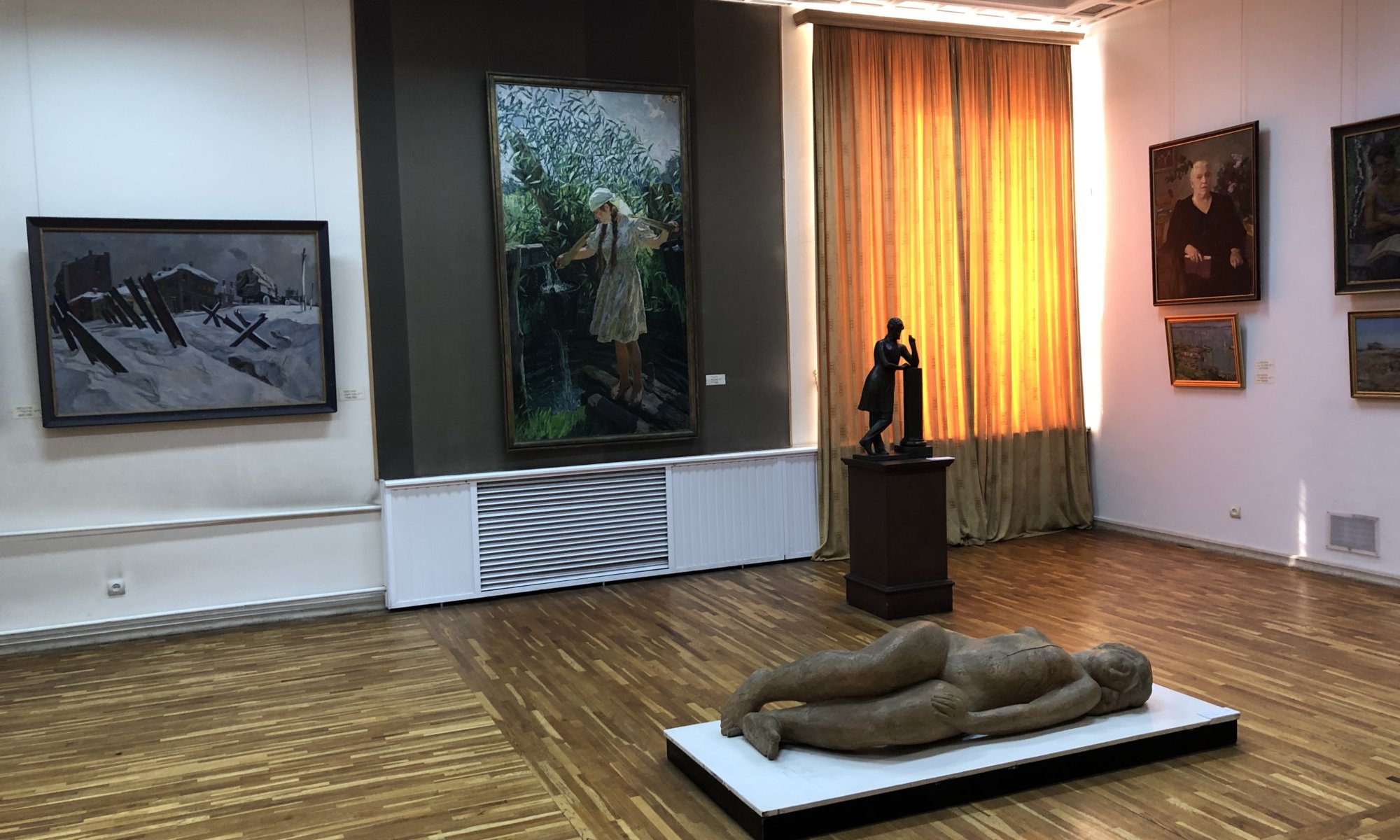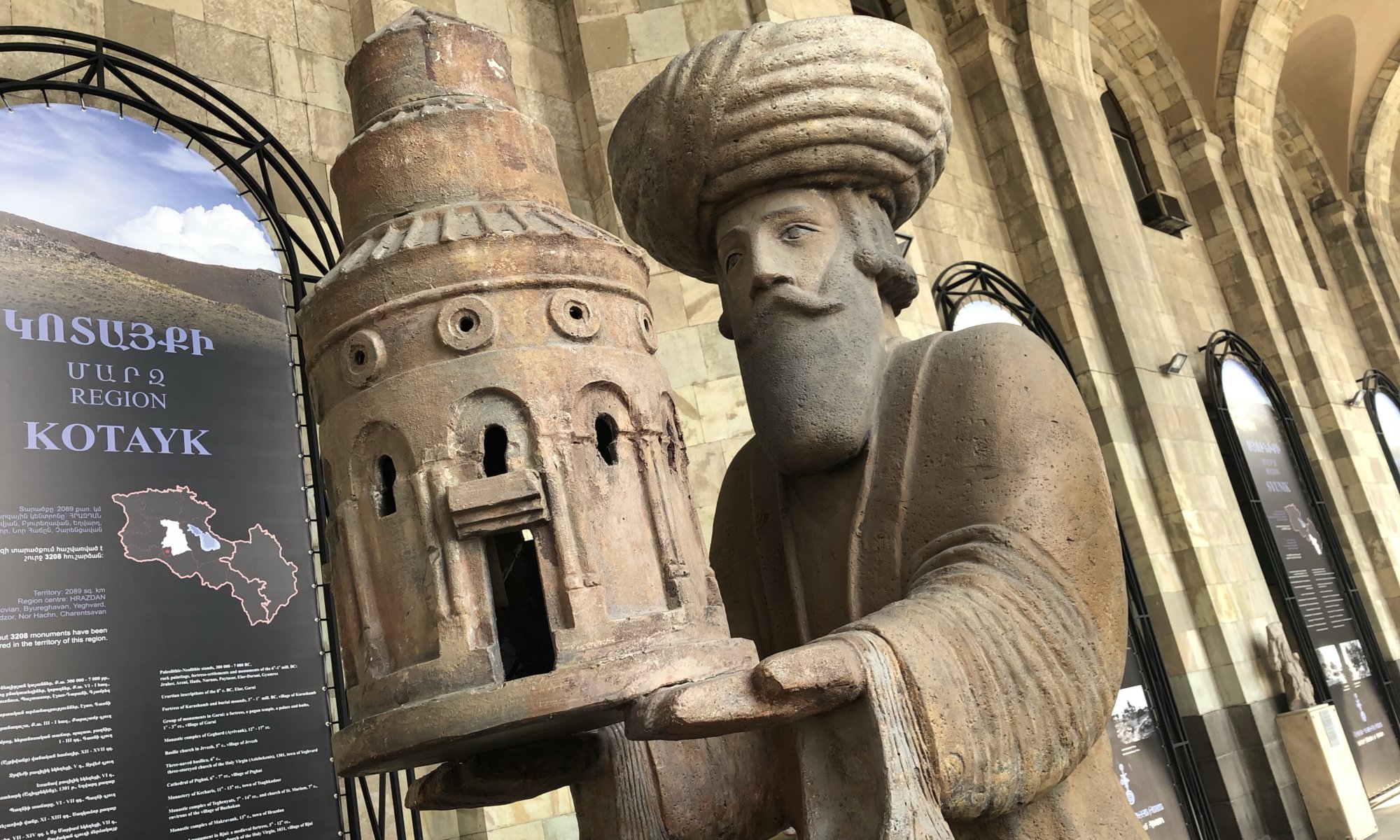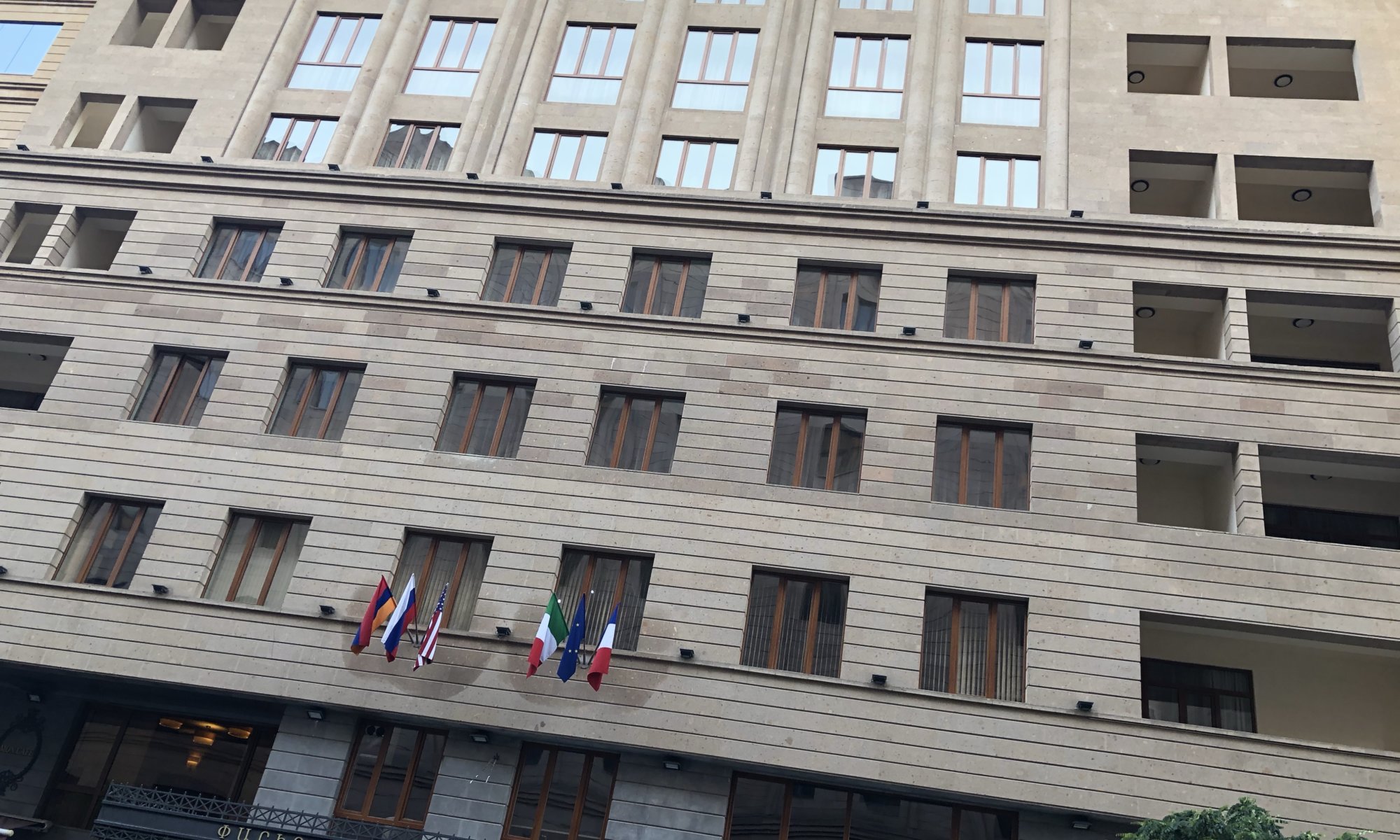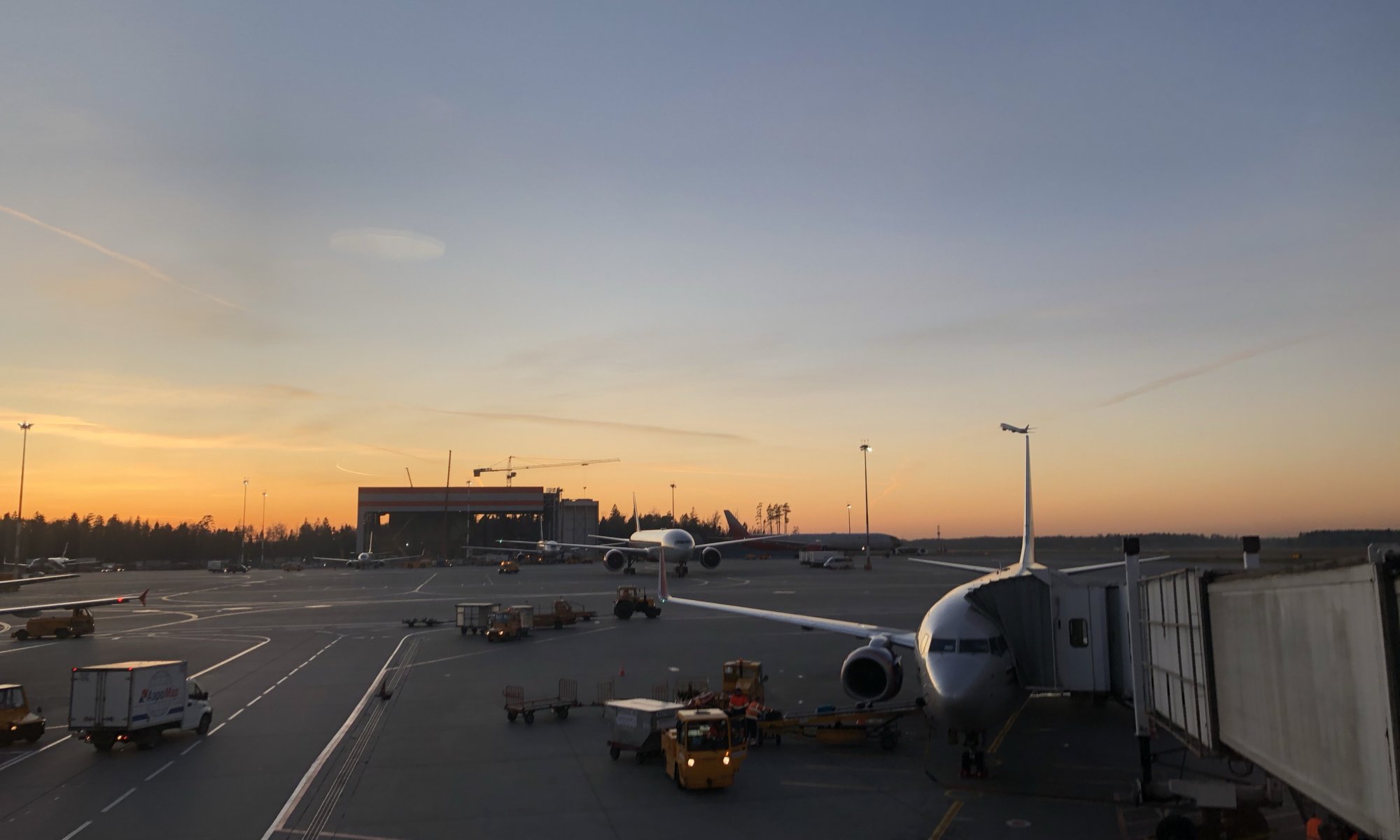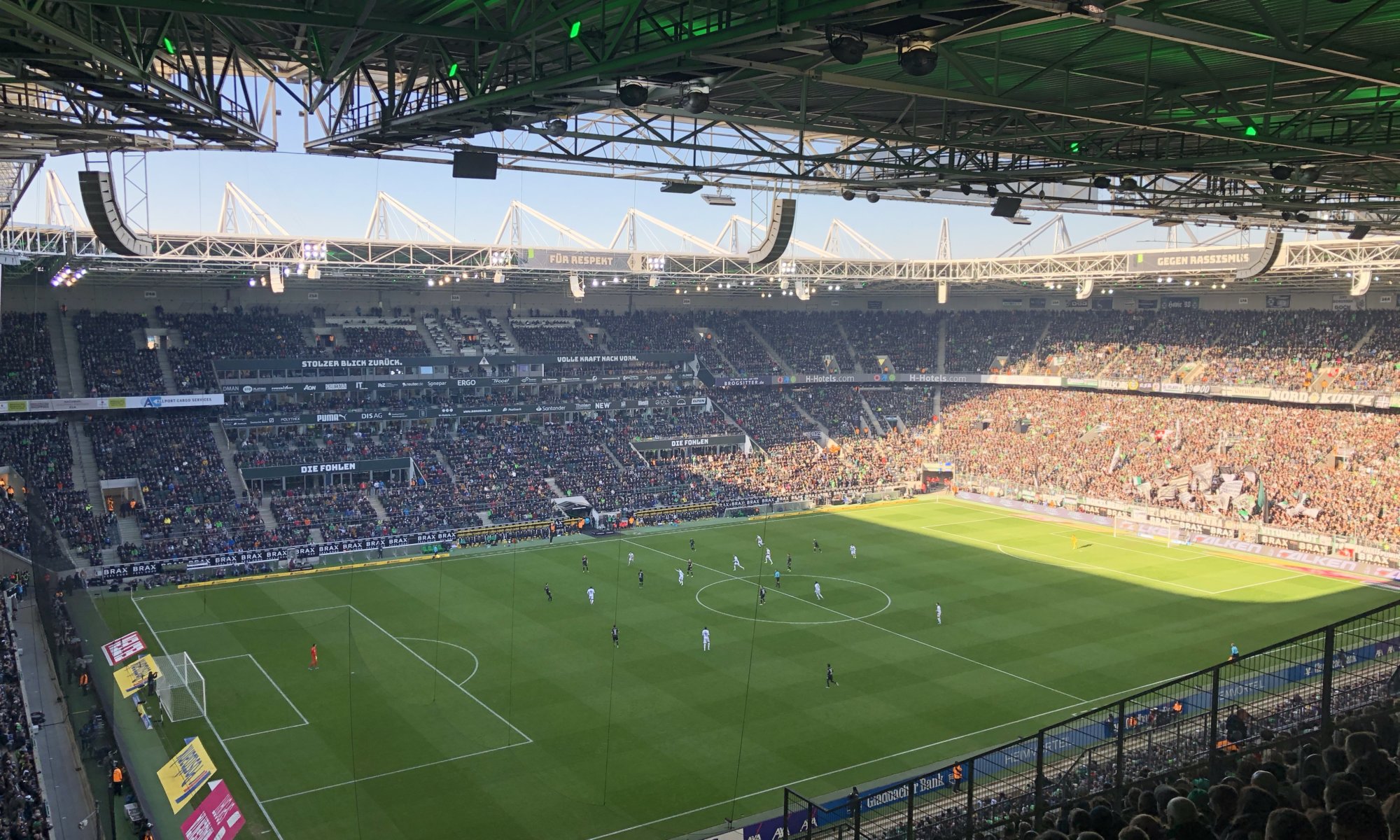Ever heard of Mesrop Mashtots? Probably not. He was living between 360 and 440 CE in Armenia and invented the beautiful Armenian alphabet. You will get to know him when visiting Matenadaran (meaning ‘library’ in old Armenian language), the Mesrop Mashtots Institute of Ancient Scriptures – a statue of him is standing in front of it. The wonderful building is just a portal; behind it, you will find a museum and its storage carved deep into the mountain to protect the content even in case of an attack with an atomic bomb.
Continue reading “Matenadaran”Blue mosque
The Gaj Dschami is the only mosque that survived Soviet times at Երևան, Armenia. It is a rather plain mosque dating back to the 18th century. Today it is a museum and it has a nice garden at its centre. It was restored during the last two decades with the help of Iran and is today owned by the Iranian embassy in Armenia. You can easily enter the grounds of the mosque and also access the mosque itself – just remember to take your shoes off.
Continue reading “Blue mosque”Zizernakaberd
East of the city centre of Երևան, Armenia, you can find a mountain formerly covered with forest – the Zizernakaberd (swallows’ fortress). On its top, you can nowadays see two things: a giant sports and culture centre for up to 6,000 spectators and more important, the central remembrance place for the genocide against the Armenians in 1915. It is a catastrophic end of a long-lasting history of conflicts based on religion – between the Christian Armenians and the Muslim Turks.
Continue reading “Zizernakaberd”Modern art
The Museum of Modern Art in Երևան, Armenia, is a little bit hard to find and placed in a rather unusual location. It can be found at the Mesrop Mashtots Avenue near the city centre and the Blue Mosque – but it is located in the basement of a building standing in the second row and above the museum there are flats. It therefore looks a bit improvised from the outside but it is really worth a visit.
Continue reading “Modern art”National gallery
You can find the national gallery of Armenia at the Republic square of Երևան. It is within the building that also hosts the historic museum and you have to get up to the first floor to enter it. Looking through the very high staircase you can see that there seven floors full of art to discover – and an ancient elevator obviously from Soviet times. Already the building is like travelling in time. In 56 halls you can see Armenian, but also Russian and European art.
Continue reading “National gallery”History museum
If you want to learn more about the past of Armenia then the history museum at the Republic square of Երևան is your best choice. You can’t overlook the impressive building at this main square. On three floors you can learn about the past from the stone age until today. It is a big collection of ceramics, carpets, ancient cloth, stones, weapons and paintings.
Continue reading “History museum”Paris Hotel
The Paris Hotel at Երևան, Armenia, is a very good four-star hotel just a few meters afar from Republic square. The rooms are quite large and I even had a balcony (which I found unusual inside an inner-city). It is a high-class hotel but not exaggerated; I felt really well there. Breakfast is served on the 12th floor where you can also get dinner and drinks in the evening hours.
Continue reading “Paris Hotel”Шереме́тьево
The Sheremetyevo Alexander S. Pushkin International Airport (Междунаро́дный аэропо́рт Шереме́тьево, SVO) is the largest airport of Москва́ and Russia. It is named after the next small city (Sheremetyevo, which is linked with Russian aristocracy) and the nationally important poet Alexander Pushkin. It handles 40 million passengers every year. Шереме́тьево is the most important gateway to the capital city but also an important hub with many interconnecting flights.
Continue reading “Шереме́тьево”Borussia-Park
Borussia Mönchengladbach, the soccer club of Mönchengladbach, Germany, was once playing at an epic stadium called the Bökelberg. Legendary fights are recorded from that times. A lot of stories could be told of that place (like when in 1971 the goal post broke in a match against Werder Bremen). What is left? The Bökelberg still exists even though the stadium was destroyed from 2005 on. It defended itself and withstood the first explosives – but today it is converted into a residential zone. You can still see the terraces and the structure of the stadium.
Continue reading “Borussia-Park”Where is the fodder?
The Tiergarten of Mönchengladbach, Germany is just a small zoological garden but one that is fun – especially for families. They don’t have too many species there but you can get pretty close to most of them. Especially the alpacas, donkeys, horses and pigs will expect that you have something for them in your pockets. Fortunately, you can buy some fodder for the animals at the cash desk. That way you can easily attract them and pet some nice animals. In addition to domestic animals, they also give a home to species like kangaroos and seals.
Continue reading “Where is the fodder?”